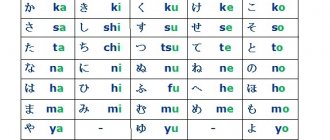Like other developed countries, Japan faces inequality in income and wealth among its citizens. This remains the most important and serious problem for the country. To a large extent, Japan's tax policy, relying on a progressive income tax (combined with social welfare programs), mitigates this inequality.
Japan's tax system as it stands today is the result of a 1988 reform that reduced the burden on the economy and increased indirect taxes on the population. The main components are income and corporate taxes.
Several residence categories determine tax liability. For tax purposes in Japan, it is necessary to report income in the form of wages, any bonus payments, including non-monetary benefits, for example, if the employer provides housing, this is also considered taxable.
Tax authorities in Japan
The Kokuzei-cho (National Tax Administration), an external body of the Ministry of Finance, oversees 12 regional tax bureaus throughout Japan, within which 524 administrative bodies have been established.
National
Responsible for the assessment and collection of national revenue, this department of revenue was created as a subsidiary agency of the Department of the Treasury on June 1, 1949. It represents a three-level organizational structure, consisting of the head office, regional tax bureaus and other bodies.
The Kokuzei-cho headquarters has four departments:
- Commissioner's Secretariat;
- Tax department;
- Revenue and Fees Management Department;
- Department of Expertise and Criminal Investigation.
The latter, at the regional tax bureau level, studies corporate and consumer taxes of large corporations and investigates cases of evasion of funds.
The mission of the Japanese tax authorities is to enable taxpayers to competently and easily fulfill their obligations. The National Tax Administration is responsible for fulfilling the responsibilities stipulated in Article 19 of the Law establishing the Ministry of Finance, with due regard to transparency and efficiency.
Local authorities
The local tax office is the administrative body responsible for the assessment and collection of domestic taxes at the prefectural and municipal levels and has close contact with taxpayers. The Service is authorized to assess and collect internal taxes within its area of responsibility. The organizational management system varies depending on the size of the tax office. Typically has a revenue management and tax collection department, and departments for individuals, corporations, and property taxes.
For what income does the 13% rate remain?
There are three types of income for which the combined rate of “650 thousand rubles. + 15%" does not apply regardless of the payment amount. These include:
- income from the sale of real estate (except for securities) or shares in it;
- income in the form of the value of property (except for securities) received as a gift;
- taxable insurance payments under insurance contracts and pension payments.
An important detail: the personal income tax rate of 13%, which does not depend on the amount of the specified income, is provided only for residents of the Russian Federation. This is stated in the new paragraph 1.1 of Article of the Tax Code of the Russian Federation.
Main types of taxes
Income and residence taxes dominate the tax system in Japan, taking up a significant portion of revenue. The second largest source is corporate taxes.
Taxes in Japan are paid on income, property and consumption.
Income tax
Like the UK, USA, and a number of other countries, Japan has progressive taxation - the amount is calculated based on the net income of an individual. Income tax in Japan is paid annually at the national, prefectural and municipal levels.
The method of collection depends on the resident status, which is determined by the period of residence in the country. The Japanese tax code considers three categories of residences:
- residents - persons who have a place of residence in the state or have been living in it for one year. Regardless of the location of the source of income, they are subject to income tax;
- non-permanent residents are persons who do not have Japanese citizenship and have resided in the country for five years or less than ten years. Their tax system is similar to that of residents, but in Japan no tax will be levied on income earned outside the country unless the funds are remitted into it;
- non-residents are persons who have lived in Japan for less than a year. Income tax is assessed on income received in the country.
Income tax is automatically deducted from your pay stub every month. The exact percentage you pay varies depending on your income level. In some ways this is similar to the PAYE system used in the UK.
| Taxable income | Tax rate |
| Up to 1,950,000 yen | 5% |
| From 1,950,000 yen to 3,300,000 yen | 10% |
| From 3,300,000 yen to 6,950,000 yen | 20% |
| From 6,950,000 yen to 9,000,000 yen | 23% |
| From 9,000,000 yen to 18,000,000 yen | 33% |
| From 18,000,000 yen to 40,000,000 yen | 40% |
| More than 40,000,000 yen | 45% |
Typically, in most cases, employees do not need to file a tax return; the company will do it for them. Although they may be asked to fill out a couple of forms confirming status, for example, place of residence or number of dependents. Exceptions include coverage of insurance premiums, medical and operating expenses in the case of self-employment.
Persons are required to file a tax return independently if:
- annual salary exceeds 20 million yen;
- have more than one employer;
- have a secondary income (second job, share of dividends) exceeding 200,000 yen per year;
- work for an employer outside Japan.
In addition, a tax return will be required if the person decides to leave the country during the financial year.
Property tax
Individuals who hold title to land, a building, or other depreciable assets on January 1 of each year pay taxes for that calendar year and most likely receive bills sometime between April and June. Based on the notification, funds can be paid in a lump sum or in four quarterly payments.
Even if the ownership of the property changes on January 2 or a subsequent date, the responsibility for paying taxes does not change. The payment consists of koteishisan-zei (tax on fixed assets) and toshikeikaku-zei (municipal tax). They are based on a standardized property valuation, which is divided into land and structure:
- the tax rate on fixed assets is 1.4% of the value of the property specified in the “Book of Taxes on Fixed Assets” for a specific asset;
- municipal tax is 0.3% of the "taxable value", which is generally lower than the market price and only applies to properties located in certain urban areas according to Japanese zoning laws.
Taxation is carried out by determining the price for a specific piece of land in a given area, based on its location in relation to transport interchanges: roads, railway lines.
The assessment of the structure is based on building materials and features (as it ages, it depreciates in value). Although condominiums have smaller plots of land, they tend to be valued higher than houses because they are considered more durable structures.
Rates are set by the central government, but tax control is exercised by local governments, which receive 52 percent of revenues, with the rest divided between the central government and prefectures. Most localities also impose a second city service tax. If a residential area is designated as an "urban zone", meaning residents have access to services and infrastructure, they pay an additional property tax.
One of the ironies of the relationship between tax officials and city officials is that homes rated as “more durable” (fire and earthquake resistant) have high assessed values. The peculiarity is that the owners of such houses pay higher taxes, even though this “strength” reduces the likelihood that they will require the services of city services (for example, the fire department).
After the first year, the property owner receives an invoice from the local government, which lists various fees but does not list the value of the property itself. Property assessments are adjusted every three years, but most homeowners typically never meet with an inspector.
Business taxes
Local collection rates can vary depending on the size of the business and location of the company. According to the law, there are four types of taxes levied on corporate profits:
- corporate (national);
- from corporate clients (local);
- from enterprises (local);
- special corporate (national, but declarations are submitted to local authorities).
Corporations are required to file a final tax return within two months of the end of the fiscal year. Extension of the filing deadline is permitted if the company receives approval from the tax office in connection with an accounting audit.
If the amount of corporate tax for the first six months of the financial year exceeds 100 thousand yen, an interim return is required. Submission and payment must be completed within two months after the end of the first half of the year.
Under the 2021 tax reform, a “net operating loss” incurred in each fiscal year (beginning April 1, 2021) can be carried forward to the next ten years. But if the company has a capital of more than 100 million Japanese yen, or is a subsidiary of a large corporation with a capital of more than 500 million Japanese yen, the amount of loss that can be deducted from taxable income cannot exceed 80% of its amount.
Although a corporation cannot receive a refund in principle, small and medium-sized companies that meet certain criteria are allowed to carry forward losses into the financial year.
Taxation of individuals
Income tax is only one aspect of tax obligations. Residence tax at the prefectural and municipal level is levied based on the city in which the individual resides, not on the place of work. The amount is calculated based on net income. The prefectural tax rate is 4%, the municipal tax rate is 6%.
Transport taxes
Car tax (jidosha-zei) is often confused with the “vehicle weight tax” (jidosha juro-zei), which is national and is paid during the biennial vehicle inspection. In essence, such a tax is local, levied by various prefectures.
There is a statutory, fixed base formula that is calculated based on engine displacement, but some prefectures provide different discounts for the elderly and disabled. The tax is paid independently and a payment receipt is required for the biennial inspection.
It only applies to regular vehicles with white license plates. Mini cars, mopeds, and a type of special bicycle – vehicles with yellow license plates – pay a “light vehicle tax”, which is levied by the municipality.
Trucks and buses are subject to national tax under a separate heading. Large trucks are rated based on total empty tonnage, while buses are rated based on the number of seats. Mobile cranes, campers, and trailers are assessed according to a separate scheme. Specialty vehicles owned by municipal and national government organizations are not subject to tax.
The car purchase tax is paid by individuals in their prefectural capacity.
Consumption tax
It works like VAT, a consumption tax on goods and services that are paid for in everyday life. The rate is currently 8% (6.3% national and 1.7% local).
On April 1, 2014, VAT increased to 8% in Japan, up from 5% in previous years, with a subsequent increase in 2015 to 10%. Due to the economic situation in Japan, the Abe government decided to delay the increase until April 2021. A second deferment has been announced for 2021, but an increase to 10% in October 2021 is under discussion. This policy is seen as a measure to reduce public debt. In response to the rate increase to 10%, lower consumption tax rates will be introduced for certain goods from 1 October 2021.
Other types of taxes in Japan
There are taxes on alcohol, tobacco and gasoline. They are included in the prices shown in stores. All heirs or recipients of gifts (property, money or assets) residing in Japan must pay inheritance and gift taxes, regardless of their nationality.
Comparison with other countries
The amount of taxes in Japan is significantly higher than in other developed countries.
For example, in the United States the most serious rate for citizens is 28%, while in the island empire it can reach 65%. Large Japanese companies contribute up to 37 percent to the budget, while small businesses contribute only 28 percent.
Legal entities are required to submit annual declarations. They are compiled within 2 months, counted from the end of the tax period.
Ordinary people who receive a salary, like us, do not have to deal with the calculation of fees - everything is done by the company’s accounting department. If they do not have additional income, then filing a declaration is not required, provided that their earnings are no more than 15,000,000 per year.
Mandatory verification of actual and recorded income is not performed. Checks are carried out randomly. The only exceptions are those who have previously been convicted of tax evasion, but this requires court permission.
System of tax incentives and subsidies
For its payers and persons representing certain social categories, the tax code provides benefits for up to 5 years.
Japan offers a variety of subsidies and incentives to attract foreign investment. For businesses setting up regional headquarters or research and development centers and projects that potentially provide employment opportunities in special regeneration zones, the government's measures are more than favorable.
In Japan, you can get a tax credit with a minimal percentage, discounts on research and development expenses. Subsidies also cover costs associated with equipment and facility rentals.











